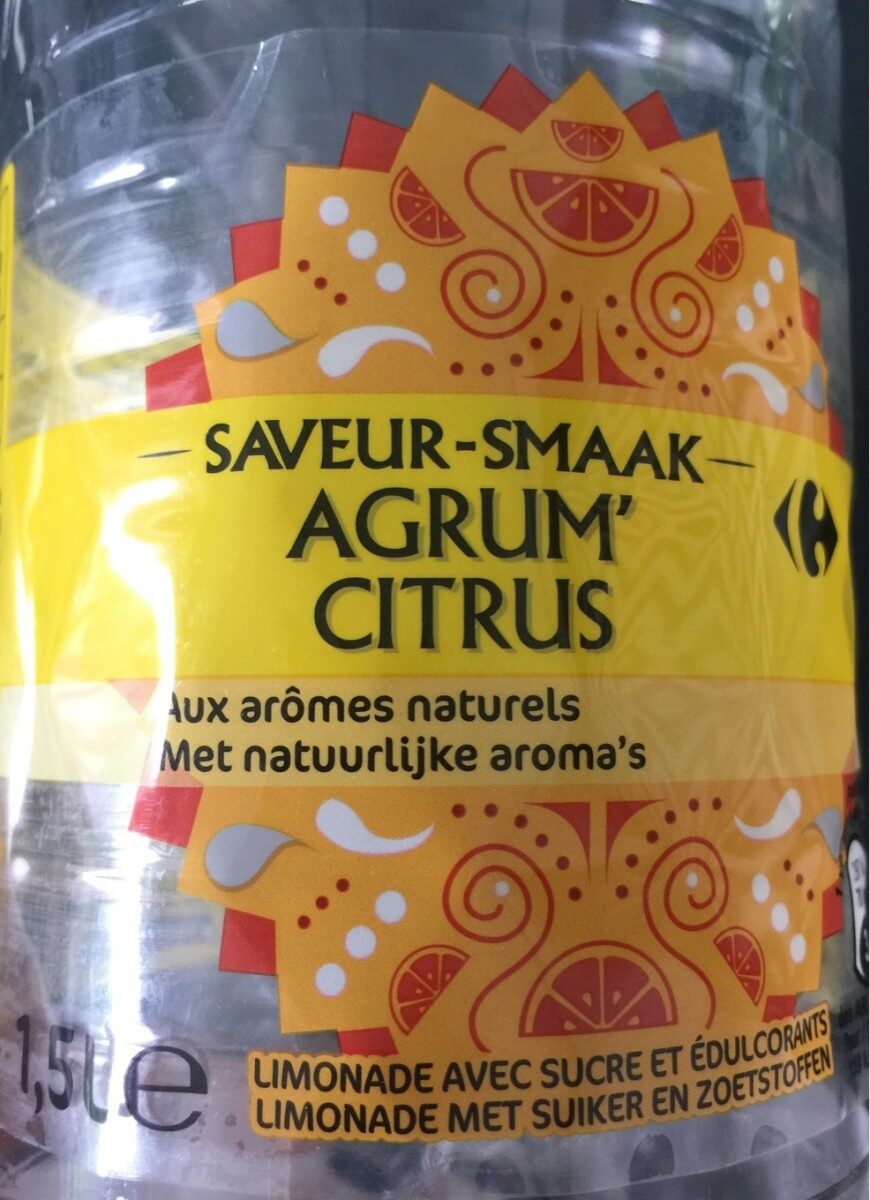Saveur agrum' - Carrefour - 1,5 l
Important note: this product is no longer sold. The data is kept for reference only. This product does not appear in regular searches and is not taken into account for statistics.
This product page is not complete. You can help to complete it by editing it and adding more data from the photos we have, or by taking more photos using the app for Android or iPhone/iPad. Thank you!
×
Some of the data for this product has been provided directly by the manufacturer Carrefour.
Barcode: 5400101203112 (EAN / EAN-13)
Common name: Boisson rafraîchissante gazéifiée aromatisée agrumes avec sucre et édulcorants.
Quantity: 1,5 l
Brands: Carrefour
Categories: Plant-based foods and beverages, Beverages, Plant-based beverages, Carbonated drinks, Fruit-based beverages, Sodas, Fruit sodas
Labels, certifications, awards: Natural flavors
Origin of the product and/or its ingredients: Cette boisson est fabriquée en France à partir de sucre français. Les autres ingrédients qui la composent sont issus de diverses origines.
Producer: Fabriqué en France par EMB 72007B (M) pour Interdis. Fabriqué en Belgique pour Refresco Benelux - Postbus 2603- 6026 ZG Maarheeze - Pays-Bas pour Interdis.
Traceability code: EMB 72007B - Ardenay-sur-Mérize (Sarthe, France)
Stores: Carrefour
Matching with your preferences
Environment
Packaging
Transportation
Other information
Other information: 1,5L e LIMONADE AVEC SUCRE ET EDULCORANTS Aux Arômes naturels
Preparation: Servir frais.
Conservation conditions: Avant ouverture, conservez votre bouteille dans un endroit propre, frais, sec et sans odeur à l'abri de la lumière. A consommer de préférence avant le : voir le col de la bouteille. Après ouverture, conservez-la au réfrigérateur et consommez-la dans les 3 jours.
Customer service: Interdis - TSA 91431 - 91343 MASSY Cedex - France
Report a problem
Data sources
Product added on by openfoodfacts-contributors
Last edit of product page on by org-carrefour.
Product page also edited by carrefour, fix-missing-lang-bot, kiliweb, packbot, sebleouf.








